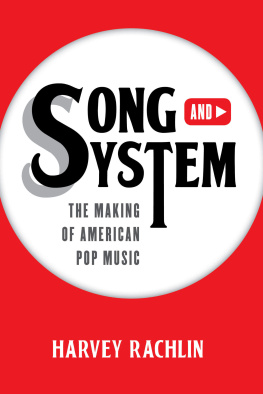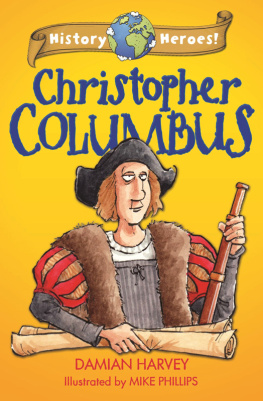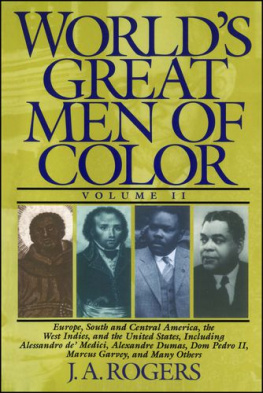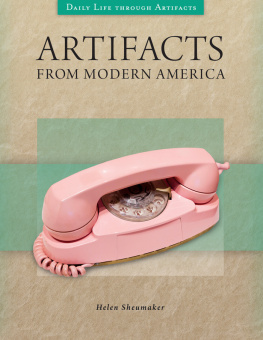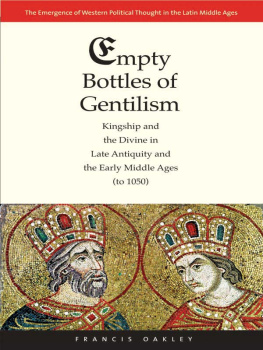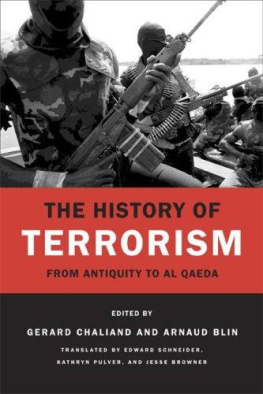Grateful acknowledgment is made to all those who kindly shared their special expertise in history or in a particular artifact or object with me. These people are listed below, with expanded acknowledgments for those whose assistance was thoroughly invaluable.
INTRODUCTION:
Dr. James F. Strange, University of South Florida; Terence C. Charman, Imperial War Museum; Marjorie L. Caygill, British Museum; Dr. B. C. Benedikz, University of Birmingham; David Meschutt, West Point Museum; Folger Shakespeare Library; Dr. John Langellier, Gene Autry Western Heritage Museum; Magen Broshi, Israel Museum; Dawn Whitman, Welcome Museum of the History of Medicine, Science Museum; George Tselos, Edison National Historic Site; Gail DeBuse Potter, Nebraska State Historical Society; Mark J. Meister, Archaeological Institute of America; Dr. Eva Hanebutt-Benz, Gutenberg-Museum; Joe Pinkston, John Dillinger Museum; Thomas Sworenzer, University of Kansas; Bernard S. Finn and Harry Hunter, National Museum of American History.
BLACK STONE OF THE KABAH:
Islamic Center, Washington, D.C.; Mohammed Magid; Imam Dr. Mohammed Shamsher Ali; Dr. Abdel-Rahman Osman.
LUCY THE HOMINID:
Dr. Eric Meikle, Institute of Human Origins, Berkeley, California.
CODE OF HAMMURABI:
Annie Caubet, Muse du Louvre, Paris.
BLACK OBELISK:
Dr. Irving Finkel, British Museum, London.
ROSETTA STONE:
Dr. Robert Brier, Long Island University (C. W. Post campus, Brookville, New York); Col. Armand J. Gelinas, M.D.; Society of Antiquaries, London; Carol A. R. Andrews, assistant keeper, British Museum.
VEIL OF THE VIRGIN:
Abb Joseph Hercouet, Cathdrale Notre-Dame de Chartres, Chartres, France; Dr. Chuck Talar; Paul C. Maloney; Ken Cavanagh.
CROWN OF THORNS:
Dr. Chuck Talar; Paul C. Maloney.
HOLY LANCE:
Rene M. Querido, Rudolf Steiner College, Fair Oaks, California; Dr. Peter Knotz; Paul C. Maloney; Arch. Pierluigi Silvan, Fabrica di S. Pietro in the Vatican; Ken Cavanagh.
SHROUD OF TURIN:
For this chapter I am very much indebted to Paul C. Maloney, general projects director for the Association of Scientists and Scholars International for the Shroud of Turin, Ltd. (ASSIST), Garnerville, New York, and author/editor of The Shroud of Turin: A Case Study in Document Authentication (Binghamton, N.Y.: Haworth Press, in preparation). He provided much valuable information, proofread the manuscript, and suggested rewrites at numerous points, many of which were incorporated in the body of the text. Mr. Maloney was a constant source of information for many other chapters, continually answering questions and providing a wealth of facts. I cannot overstate my gratitude for his kind and generous help.
RUBENS VASE:
Dr. Gary Vikan, Walters Art Gallery, Baltimore.
ANTIOCH CHALICE:
Dr. Marlia Mundell Mango; Dr. Gary Vikan; Thomas Hoving.
BOOK OF KELLS:
I am most grateful to the late Archbishop George Simms of Dublin, Ireland, one of the most eminent modern authorities on this work. Also Daithi OCeallaigh, consulate general of Ireland in New York City, and Bernard Meehan and the Trinity College Library, Dublin, Ireland.
BAYEUX TAPESTRY:
Sylvette Lemagnen, conservateur de la Bibliothque municipale et de la Tapisserie de Bayeux, Bayeux, France.
HOLY CHILD OF ARACOELI:
Father Bernardino Di Prospero, Convento S. Maria in Aracoeli, Rome, Italy.
COLUMBUSS BOOKS OF PRIVILEGES:
Rosemary Fry Plakas, the Library of Congresss American history specialist in its Rare Book and Special Collections Division, made me aware of these volumes and told me the story of the volume in the Library of Congress in Washington, D.C. An authority on Columbuss Books of Privileges, she proofread the chapter and filled in gaps; I am very grateful to her. Also Rosario Parra Cala and Mara Antonia Colomar of Archivo General de Indias in Seville, Spain; Dr. Flavia Sartore, director of the Comune di Genova in Italy; Monique Constant, chief conservator in the History Division at the Ministere des Affaires trangres, Paris; Juan Guilln Torralba, director of the Biblioteca Columbina y Capitular, Seville.
CANTINO MAP:
I am grateful to Dr. Ernesto Milano, director of the Estense Library, Modena, Italy, who provided much valuable information in his letters to me.
HOPE DIAMOND:
Generous assistance for this chapter came from Mary Winters, formerly a research assistant at the National Museum of Natural History, Washington, D.C, and one of the great experts on the Hope Diamond; Russell C. Feather, Department of Mineral Sciences, National Museum of Natural History; Elise B. Misiorowski and the Gemological Institute of America, Santa Monica, California.
EDMOND HALLEYS ASTRONOMICAL OBSERVATION NOTEBOOKS:
I was fortunate to have the kind assistance of Adam J. Perkins, the Royal Greenwich Observatory archivist, Department of Manuscripts and University Archives, Cambridge University Library, Cambridge, England. Not only did Mr. Perkins provide the relevant information, he always responded to my letters promptly and comprehensively. Also Professor A. Boksenberg, Royal Greenwich Observatory, Cambridge.
DECLARATION OF INDEPENDENCE:
Dr. Gerard Gawalt, Library of Congress (Manuscript Division); Elissa OLoughlin and Milton O. Gustafson, National Archives, Washington, D.C.
GEORGE WASHINGTONS FALSE TEETH:
I am especially indebted to Dr. H. Berton McCauley, 1991 president, American Academy of the History of Dentistry, Baltimore, Maryland. Valuable assistance also came from Dr. Andrew Christopher; Dr. Gardner Patrick Henry Foley, who sent me a box full of old notes, newspaper clippings, pictures, and other materials relating to Washingtons dentures from his collection; Christine Meadows, Mount Vernon Ladies Association; Barbara Easton, National Museum of Dentistry, Baltimore; Jonathan Evans, Royal London Trust.
CRYPT OF JOHN PAUL JONES:
James W Cheevers, United States Naval Academy Museum, Annapolis, Maryland.
HMS VICTORY:
Colin S. White, chief curator, Royal Naval Museum, Portsmouth, Hampshire, England.
VICE ADMIRAL LORD NELSONS UNIFORM COAT:
P. M. Blackett Barber, curator of uniforms, medals and weapons, National Maritime Museum, Greenwich, London.
STAR-SPANGLED BANNER:
Dr. Harold D. Langley, curator of naval history, National Museum of American History, Washington, D.C.; Scott S. Sheads, Fort McHenry National Monument and Historic Shrine, Baltimore; Francis ONeill, Maryland Historical Society, Baltimore. Dr. Langley noted that scholars such as Walter Lord, Scott Sheads, P. W. Filby, and Edward G. Howard have greatly advanced our understanding of the Fort McHenry battle, the flag known as the Star-Spangled Banner, and Francis Scott Keys lyric poem of the same name.
NAPOLEONS PENIS:
I am especially grateful to the distinguished Napoleon authority Col. J. Armand Gelinas, M.D., retired; Gayle L. Petty, Library Company of Philadelphia; Leslie Morris, Rosenbach Library, Philadelphia; Bruce Gimelson; Dr. John K. Lattimer; Robert M. Snibbe and the Napoleonic Society of America, Clearwater, Florida.
LONDON BRIDGE:
Elrose M. Dussault, former historian of Lake Havasu City.
JEREMY BENTHAM:
I am most grateful to Philip Schofield of University College London, who kindly provided information and answers to my many questions and suggested revisions to the chapter. He is part of a team of scholars working on the Bentham Project, a research program dedicated to bringing out scholarly editions of the works of Jeremy Bentham. There will be about sixty-five volumes in total, based in part on the approximately seventy thousand sheets of Benthams manuscripts that are deposited at the library at University College London; Tarique Shakir-Khalil of the University of London Union.


